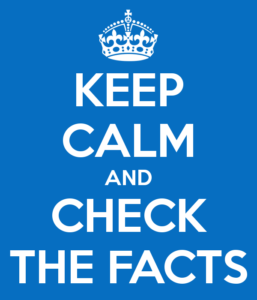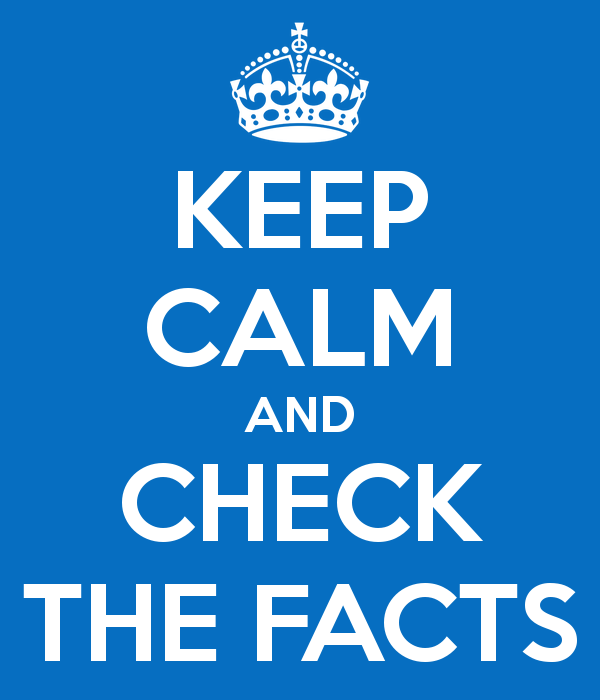 Each September during the National Recovery Month (Recovery Month) observance, the Substance Abuse and Mental Health Services Administration (SAMHSA) (http://www.samhsa.gov), within the U.S. Department of Health and Human Services (HHS) (http://www.hhs.gov), releases the National Survey on Drug Use and Health (NSDUH). The survey is a primary source of information on the prevalence and impact of mental and substance use disorders across the country, as well as statistics that can add context, add credibility, and help you achieve your Recovery Month event goals. In addition, members of the media are more likely to cover an event if there is information supporting mental and substance use disorders as a public health issue. State-specific statistics (http://www.samhsa.gov/data/NSDUH.aspx) are also a good way to illustrate the local impact of behavioral health conditions. The following facts from the NSDUH survey and other data sources illustrate that behavioral health is essential to health, prevention works, treatment is effective, and people recover from these conditions. Included are facts about each audience – youth and young adults, faith leaders, first responders and policymakers – referenced in this year’s toolkit. This data can be also supplemented by researching local numbers in your city or state. Behavioral Health is Essential to Health…
Each September during the National Recovery Month (Recovery Month) observance, the Substance Abuse and Mental Health Services Administration (SAMHSA) (http://www.samhsa.gov), within the U.S. Department of Health and Human Services (HHS) (http://www.hhs.gov), releases the National Survey on Drug Use and Health (NSDUH). The survey is a primary source of information on the prevalence and impact of mental and substance use disorders across the country, as well as statistics that can add context, add credibility, and help you achieve your Recovery Month event goals. In addition, members of the media are more likely to cover an event if there is information supporting mental and substance use disorders as a public health issue. State-specific statistics (http://www.samhsa.gov/data/NSDUH.aspx) are also a good way to illustrate the local impact of behavioral health conditions. The following facts from the NSDUH survey and other data sources illustrate that behavioral health is essential to health, prevention works, treatment is effective, and people recover from these conditions. Included are facts about each audience – youth and young adults, faith leaders, first responders and policymakers – referenced in this year’s toolkit. This data can be also supplemented by researching local numbers in your city or state. Behavioral Health is Essential to Health…
- In 2012, 43.7 million U.S. adults aged 18 or older (18.6 percent of adults) had a mental illness in the past year.1
- In 2012, 34.1 million U.S. adults aged 18 or older (14.5 percent of adults) reported receiving mental health services in the past year.2
- Among adults aged 18 or older in 2012, 9.6 million (4.1 percent of adults) had serious mental illness in the past year.3
- Among the 43.7 million adults aged 18 or older with any mental illness in 2012, 17.9 million (41 percent of adults) received mental health services in the past year. Among the 9.6 million adults with serious mental illness in 2012, 6 million (62.9 percent of adults) received mental health services in the past year.4
- In 2010, suicide was the second leading cause of death for people aged 25 to 345, and the total number of suicides and alcohol- and drug-induced deaths is greater than deaths caused by traffic accidents, HIV/AIDS, and breast cancer combined.6
- In 2012, 22.2 million people aged 12 or older were classified with substance dependence or abuse in the past year.7
- In 2012, 20.6 million people aged 12 or older needed treatment for an illicit drug or alcohol use problem, but did not receive treatment at a specialty facility in the past year.8
- In 2012, 8.4 million U.S. adults reported having co-occurring disorders, meaning they have both a mental and a substance use disorder.9
- Individuals with mental illnesses have increased risk for a number of physical health problems, including diabetes,10 cardiovascular disease,11 obesity, and smoking.12 Half of all lifetime cases of mental and substance use disorders begin by age 14 and three-fourths by age 24.13
Prevention Works, Treatment is Effective, and People Recover…
- The first symptoms typically precede a mental and/or substance use disorder by two to four years, offering a window of opportunity to intervene early and often.14
- Early treatment for mental illnesses can help delinquent adolescents avoid violent futures.15
- Scientific research shows that treatment can help patients addicted to drugs stop using, avoid relapse, and successfully recover their lives.16
- Approximately three-quarters of Americans believe that recovery is possible from addiction to substances such as alcohol, prescription drugs, and marijuana.17
- Two-thirds of Americans believe that treatment and support can help people with mental illnesses lead normal lives.18
Groups Who Can Make a Difference…
Faith Leaders:
- About 36.5 percent of clergy preach a sermon on substance use disorders more than once a year.19
- In 2012, 30.4 percent of youths aged 12 to 17 reported they had attended religious services 25 or more times in the past year; 74.4 percent agreed or strongly agreed with the statement that religious beliefs are a very important part of their lives; and 33.7 percent agreed or strongly agreed with the statement that it is important for their friends to share their religious beliefs.20
Youth (ages 12-17) and Young Adults (ages 18-25):
- In 2012, there were about 2.9 million people aged 12 or older who used an illicit drug for the first time, and more than half of these initiates were younger than age 18.21
- The percentage of young adults 18 to 25 (6.8 percent) who have a co-occurring disorder was the highest among adults age 18 and older.22
- Studies have shown that children with poor academic performance and inappropriate social behavior at ages 7 to 9 are more likely to be involved with substance abuse by age 14 or 15.23
First Responders:
- In the United States, there are approximately 794,300 police officers and detectives,24more than 1.1 million firefighters operating in more than 30,000 fire departments,25 and approximately 226,000 EMTs and paramedics.26
- In the United States, 18.9 percent of men and 15.2 percent of women in the United States reported a lifetime experience of a natural disaster.27 The effects of a natural disaster can cause mental illnesses, most frequently post-traumatic stress disorder, followed by depression, and then other anxiety disorders.28
Policymakers:
- Untreated mental and substance use disorders are costly for states, which can lead to increased spending in various settings, such as hospitals, correctional facilities, schools, and homeless shelters.29
- Research shows that for every $1.00 invested in prevention and early treatment programs, $2.00 to $10.00 could be saved in health costs, criminal and juvenile justice costs, educational costs, and lost productivity.30
Sources
- Substance Abuse and Mental Health Services Administration, Results from the 2012 National Survey on Drug Use and Health: Mental Health Findings, NSDUH Series H-47, HHS Publication No. (SMA) 13-4805. Rockville, MD: Substance Abuse and Mental Health Services Administration, 2013, p. 1.
- Substance Abuse and Mental Health Services Administration, Results from the 2012 National Survey on Drug Use and Health: Mental Health Findings, NSDUH Series H-47, HHS Publication No. (SMA) 13-4805. Rockville, MD: Substance Abuse and Mental Health Services Administration, 2013, p. 1.
- Substance Abuse and Mental Health Services Administration, Results from the 2012 National Survey on Drug Use and Health: Mental Health Findings, NSDUH Series H-47, HHS Publication No. (SMA) 13-4805. Rockville, MD: Substance Abuse and Mental Health Services Administration, 2013, p. 1.
- Substance Abuse and Mental Health Services Administration, Results from the 2012 National Survey on Drug Use and Health: Mental Health Findings, NSDUH Series H-47, HHS Publication No. (SMA) 13-4805. Rockville, MD: Substance Abuse and Mental Health Services Administration, 2013, p. 2.
- Centers for Disease Control and Prevention. Fatal Injury Data. (2009). Web-based Injury Statistics Query and Reporting System. Retrieved on October 3, 2013 from http://www.cdc.gov/injury/wisqars/fatal.html.
- Hoyert D.L., Xu, J.Q. (2012). Deaths: Preliminary Data for 2011. National Vital Statistics Reports; vol 61 no 6. Hyattsville, MD: National Center for Health Statistics.
- Substance Abuse and Mental Health Services Administration, Results from the 2012 National Survey on Drug Use and Health: Summary of National Findings, NSDUH Series H-46, HHS Publication No. (SMA) 13-4795. Rockville, MD: Substance Abuse and Mental Health Services Administration, 2013, p. 6.
- Substance Abuse and Mental Health Services Administration, Results from the 2012 National Survey on Drug Use and Health: Summary of National Findings, NSDUH Series H-46, HHS Publication No. (SMA) 13-4795. Rockville, MD: Substance Abuse and Mental Health Services Administration, 2013, p. 87.
- Substance Abuse and Mental Health Services Administration, Results from the 2012 National Survey on Drug Use and Health: Mental Health Findings, NSDUH Series H-47, HHS Publication No. (SMA) 13-4805. Rockville, MD: Substance Abuse and Mental Health Services Administration, 2013, p. 46.
- Li, C., Ford, E.S., Zhao, G., Strine, T.W., Dhingra, S., Barker, L., Berry, J.T., & Mokdad, A.H. (2007). Association Between Diagnosed Diabetes and Serious Psychological Distress Among U.S. Adults: the Behavioral Risk Factor Surveillance System. International Journal of Public Health, 54(1), 43-51.
- Fan, A.Z., Strine, T.W., Jiles, R., & Mokdad, A.H. (2006). Depression and Anxiety Associated with Cardiovascular Disease among Persons Aged 45 Years and Older in 38 States of the United States. Preventive Medicine, 46(5), 445-540.
- Stine, T.W., Mokdad, A.H., Dube, S.R., Balluz, L.S., Gonzalez, O., Berry, J.T., Maderscheid, R., & Kroenke, K. (2008). The Association of Depression and Anxiety with Obesity and Unhealthy Behaviors Among Community-Dwelling US adults. General Hospital Psychiatry, 30, 127-137.
- Kessler, R. C., Berglund, P., Demler, O., Jin, R., Merikangas, K. R., and Walters, E. E. (2005). Lifetime Prevalence and Age-of-Onset Distributions of DSM-IV Disorders in the National Comorbidity Survey Replication.Archives of General Psychiatry, 62(6), 593–602.
- The National Academies. (2009). Preventing Mental, Emotional, and Behavioral Disorders among Young People Progress and Possibilities. Retrieved October 3, 2013 from http://www.nap.edu/download.php?record_id=12480, p. 50.
- The President’s New Freedom Commission on Mental Health. (2003). Retrieved October 16, 2013, fromhttp://www.nami.org/Template.cfm?Section=Policy&Template=/ContentManagement/ContentDisplay.cfm&ContentID=16699, p. 57.
- U.S. Department of Health and Human Services, National Institute on Drug Abuse. (n.d.). Drugfacts: Treatment Approaches for Drug Addiction. Retrieved October 3, 2013 fromhttp://www.drugabuse.gov/publications/drugfacts/treatment-approaches-drug-addiction.
- Substance Abuse and Mental Health Services Administration. (n.d.). Americans Believe in Prevention and Recovery From Addiction. CARAVAN Fact Sheet. Retrieved on October 3, 2013, from http://www.samhsa.gov/Attitudes/CARAVAN_Factsheet.pdf, p. 2.
- U.S. Department of Health and Human Services, Substance Abuse and Mental Health Services Administration. (2006). National Mental Health Anti-Stigma Campaign: What a Difference a Friend Makes (SMA07-4257). Retrieved on October 3, 2013, from http://www.samhsa.gov/MentalHealth/SMA07-4257.pdf, p. 3.
- The National Center on Addiction and Substance Abuse at Columbia University. (2001). So Help Me God: Substance Abuse, Religion and Spirituality. Retrieved on September 9, 2013, fromhttp://www.casacolumbia.org/articlefiles/379-so%20help%20me%20god.pdf, p. 19.
- Substance Abuse and Mental Health Services Administration, Results from the 2012 National Survey on Drug Use and Health: Summary of National Findings, NSDUH Series H-46, HHS Publication No. (SMA) 13-4795. Rockville, MD: Substance Abuse and Mental Health Services Administration, 2013, p. 72.
- Substance Abuse and Mental Health Services Administration, Results from the 2012 National Survey on Drug Use and Health: Summary of National Findings, NSDUH Series H-46, HHS Publication No. (SMA) 13-4795. Rockville, MD: Substance Abuse and Mental Health Services Administration, 2013.
- Substance Abuse and Mental Health Services Administration, Results from the 2012 National Survey on Drug Use and Health: Mental Health Findings, NSDUH Series H-47, HHS Publication No. (SMA) 13-4805. Rockville, MD: Substance Abuse and Mental Health Services Administration, 2013, p. 46.
- National Institute on Drug Abuse. (2003). Preventing Drug Use Among Children and Adolescents: A Research-Based Guide for Parents, Educators, and Community Leaders. Retrieved on October 15, 2013, fromhttp://www.drugabuse.gov/sites/default/files/preventingdruguse_2.pdf, p. 8
- United States Department of Labor, Bureau of Labor Statistics. (2012). Police and Detectives. Retrieved on September 9, 2013, from http://www.bls.gov/ooh/Protective-Service/Police-and-detectives.htm.
- National Fire Protection Association. (2012). U.S. Fire Department Profile. Retrieved on September 9, 2013, from http://www.nfpa.org/research/statistical-reports/fire-service-statistics/us-fire-department-profile.
- United States Department of Labor, Bureau of Labor Statistics. (2012). EMTs and Paramedics. Retrieved on September 9, 2013, from http://www.bls.gov/ooh/healthcare/emts-and-paramedics.htm. Kessler, R. C., Sonnega, A., Bromet, E., et al. (1995). Posttraumatic stress disorder in the National Comorbidity Survey. Archives of General Psychiatry, 52, 1048–60.
- National Center for PTSD. (n.d.). Retrieved on October 21, 2013, fromhttp://www.ptsd.va.gov/public/pages/effects-natural-disasters.asp.
- National Council for Behavioral Healthcare. (n.d.). The Spill Over Effect of Untreated Mental Illnesses and Substance Use Disorders on State Budgets.
- Retrieved on September 9, 2013, fromhttp://old.thenationalcouncil.org/galleries/policy-file/Spill%20Over%20Effect_State%20Budgets_NCSL.pdf.
- Substance Abuse and Mental Health Services Administration. (2012). Justification of Estimates for Appropriations Committees. Retrieved October 3, 2013, fromhttp://www.samhsa.gov/Budget/FY2012/SAMHSA-FY11CJ.pdf, p. 172.




